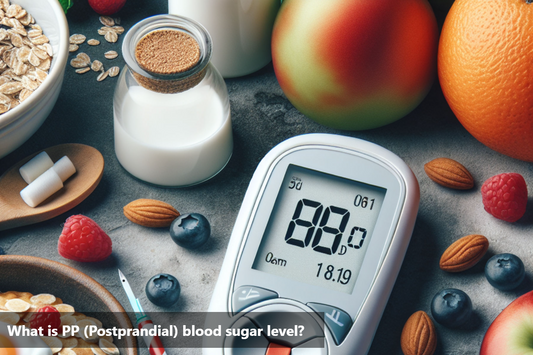NPH insulin, also known as Neutral Protamine Hagedorn insulin, is a type of intermediate-acting insulin that plays a crucial role in managing diabetes. It is typically cloudy in appearance due to its components, distinguishing it from clear insulins.
This insulin is designed to help regulate blood sugar levels over an extended period, usually peaking within 4 to 12 hours after injection. Its duration of action can last up to 24 hours, making it suitable for controlling blood glucose throughout the day and night. NPH insulin is beneficial for individuals requiring coverage beyond mealtime. It is often used in combination with rapid-acting insulins to mimic the body's natural insulin secretion pattern and provide basal insulin coverage.
The significance of NPH insulin lies in its ability to assist in maintaining stable blood sugar levels, reducing the risk of hyperglycemia and hypoglycemia in individuals with diabetes. Understanding how NPH insulin works and incorporating it into a comprehensive diabetes management plan can help enhance overall health and well-being for those living with the condition.
How does NPH Insulin Work?
NPH insulin, short for Neutral Protamine Hagedorn insulin, operates uniquely within the body to regulate blood sugar levels effectively.
This type of insulin comprises crystals that slow down its absorption into the bloodstream.
When injected subcutaneously, the crystals dissolve gradually, allowing for an extended release of insulin over an extended period.
The mechanism of NPH insulin involves a delayed onset of action compared to rapid-acting insulins.
After administration, it starts working within 1 to 2 hours, with peak effects occurring between 4 to 12 hours.
This delayed action helps in managing blood glucose levels over an extended period, especially between meals and throughout the night.
NPH insulin primarily works by facilitating the uptake of glucose into body cells for energy production.
By mimicking the role of natural insulin, NPH insulin aids in lowering high blood sugar levels.
-
Its slow and sustained action makes it suitable for controlling blood sugar levels between meals and during the night, providing more stable glucose levels for individuals with diabetes.
Understanding how NPH insulin works is crucial for individuals managing diabetes, as it plays a vital role in maintaining optimal blood sugar levels throughout the day. The gradual absorption and sustained action of NPH insulin contribute significantly to its effectiveness in managing diabetes effectively.
Benefits and Side Effects of NPH Insulin
Benefits:
Intermediate-Acting: NPH insulin provides intermediate-duration insulin coverage, making it suitable for managing blood sugar levels between meals and overnight.
Flexible Administration: It can be administered once or twice daily, offering flexibility in dosing schedules to accommodate individual insulin requirements.
Cost-Effectiveness: Compared to some newer insulin formulations, NPH insulin tends to be more affordable, making it a cost-effective option for many patients.
Compatibility with Other Insulins: NPH insulin can be mixed with short-acting insulin preparations, providing combined coverage for both short-term and long-term blood sugar control.
Reduced Risk of Hypoglycemia: Its intermediate-acting nature helps minimize the risk of hypoglycemia compared to rapid-acting insulins, particularly when used in appropriate dosages.
Side Effects:
Hypoglycemia: While less frequent compared to short-acting insulins, NPH insulin can still cause low blood sugar levels, especially if not timed appropriately with meals or if the dosage is too high.
Injection Site Reactions: Some individuals may experience redness, swelling, or irritation at the injection site. Rotating injection sites can help minimize these reactions.
Weight Gain: Like other insulin formulations, NPH insulin can contribute to weight gain, particularly if blood sugar levels are not adequately controlled or if excess insulin is administered.
Allergic Reactions: Although rare, allergic reactions to NPH insulin can occur, manifesting as itching, rash, or difficulty breathing. Immediate medical attention is necessary if allergic symptoms develop.
Insulin Resistance: Prolonged use of NPH insulin may lead to insulin resistance in some individuals, requiring adjustments in dosage or treatment regimen.
NPH Insulin Demystified
NPH insulin provides a reliable way to regulate blood glucose levels by mimicking the body's natural insulin release pattern. Its onset of action, peak effect, and duration make it suitable for maintaining steady blood sugar throughout the day. This insulin type is often used in combination with other types of insulin to achieve optimal glycemic control.
Moreover, NPH insulin offers flexibility in dosing schedules and can be tailored to fit individual lifestyle needs. While it is essential to understand the potential side effects associated with NPH insulin, such as hypoglycemia and injection site reactions, the benefits usually outweigh the risks when administered under medical supervision.
NPH insulin is a valuable tool in diabetes management that provides a balance between controlling blood sugar levels and ensuring a good quality of life for individuals with diabetes. Its affordability, effectiveness, and versatility make it a popular choice among healthcare providers and patients alike.
FAQs
-
How does NPH insulin work?
NPH insulin works by lowering blood sugar levels by helping the body's cells absorb and use glucose for energy. It has an onset of action within 1-2 hours, peaks in 4-12 hours, and lasts up to 24 hours.
-
How is NPH insulin administered?
NPH insulin is typically administered via subcutaneous injection using an insulin syringe or insulin pen. It is important to rotate injection sites and follow proper injection techniques for optimal absorption.
-
Can NPH insulin be mixed with other insulins?
NPH insulin can be mixed with short-acting insulins (e.g., regular insulin) to achieve a customized insulin regimen. However, it is important to follow proper mixing and administration instructions provided by a healthcare provider.
This Blog post is an initiative by DiabeSmart, to provide accurate and Nutritionist / Doctor approved information related to Diabetes. DiabeSmart is India's first Food brand designed specifically for Diabetics, that has been clinically tested on Diabetics and Pre-Diabetics to deliver 55% - 70% lower Sugar spikes. DiabeSmart is part of Lo! Foods - India's leading brand for Everyday Functional Health foods.











